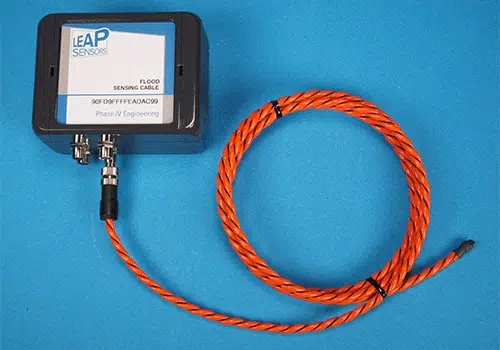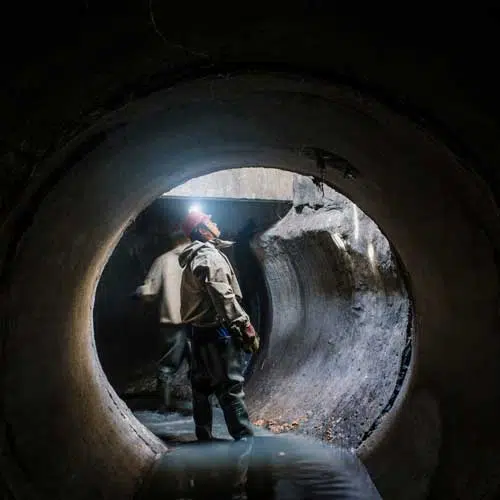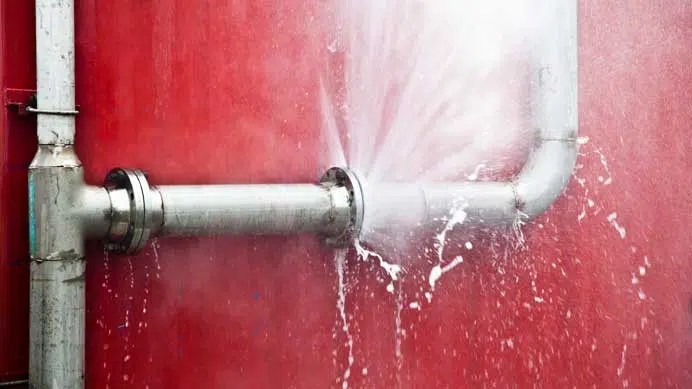A Forbes magazine article published in 2021 stated that “A study of 729,999 commercial and residential properties in the contiguous U.S. concluded that floods will cost businesses $26.8 billion in direct lost output and $23 billion in lost output due to downtime in 2022.” And this doesn’t include risks to civil structures such as tunnels or underpasses. Clearly, water damage, whether from burst pipes, leaks, or flooding, is a major concern. Because of this, Phase IV has developed a wireless flood sensor with advanced remote monitoring and alerts, to detect leaks or water intrusions and help prevent catastrophic losses.
How Does the Wireless Flood/Leak Detection Sensor Work?
Part of the Leap Sensors system, the wireless flood sensor transceiver node integrates a water rope sensor that you can lay out as needed – around the perimeter of a room or a piece of equipment, or along the length of a tunnel, for example. Available in lengths from 10 to 100 feet, you can cut the rope for an exact fit, or multiple sensors can be combined on one transceiver node to monitor a widespread area.

Besides the ability to integrate multiple sensors on the same transceiver node – and combine the flood sensor with other types of sensors– we’ve incorporated other breakthrough features. Not only does the sensor send an alert if it detects moisture, it can determine how much the water has spread along the cable, giving you more insight into the extent of flooding or leakage. As with all Leap sensors, parameters and alerts are easy to configure to meet your exact needs – for example, if a little water is to be expected and doesn’t require an alert, or if there needs to be an alert at the first sign of wetness. The alerts will also be sent however you want to receive them: via text, call, or email.
Wireless Flood/Leak Detection Sensor Applications
We developed the flood sensor with a few applications in mind:
- Manufacturing facilities: Get cost-effective peace of mind during off-shifts or changeovers and protect expensive, sometimes irreplaceable equipment.
- Data Centers: Many data centers use raised floors for efficient cooling and cable management. Moisture and flooding can be costly not only in physical damage, but also in loss of data. Leap’s easy-to-install system makes it easy to add critical monitoring.
- Structural Health Monitoring (SHM): Simple, remote monitoring of tunnels and underpasses can help detect water incursions. In addition, our flood sensor can be integrated with a cellular transceiver node for remote locations with no wireless infrastructure.
- Vacant buildings: Another application that’s made easier with cellular monitoring. Water damage is one of the main causes of deterioration of vacant commercial properties. Our flood sensor system is a convenient way to help prevent this.

Learn more about how Leap’s wireless flood sensor system can work for you by talking to one of our wireless sensor experts today.
